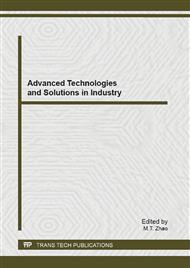p.720
p.723
p.727
p.731
p.735
p.739
p.743
p.747
p.751
Research of Alloy Orb on a New Immune Genetic Algorithm
Abstract:
The standard Genetic Algorithm has several limitations when dealing with dynamic environments. The most harmful limitation as to do with the tendency for the large majority of the members of a population to convergence prematurely to a particular region of the search space, making thus difficult for the GA to find other solutions when changes in the environment occur. In order to avoid the premature convergence and the slow search efficiency at posterior evolutionary process of the traditional immune genetic algorithm, a new immune genetic algorithm is proposed. This algorithm uses orthogonal crossover to generate initial population and uses elitist-crossover to increase the good patterns of the population and uses hybrid mutation to increase the ability of local and global optimization. It has shown fascinating results when being used in the optimization of multimodal function.
Info:
Periodical:
Pages:
735-738
Citation:
Online since:
June 2013
Authors:
Keywords:
Price:
Сopyright:
© 2013 Trans Tech Publications Ltd. All Rights Reserved
Share:
Citation:


